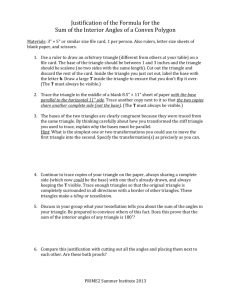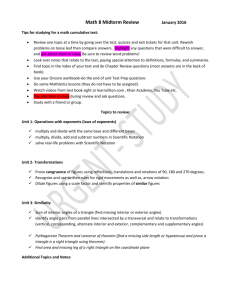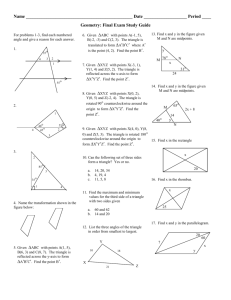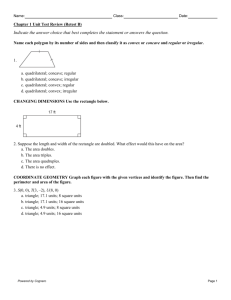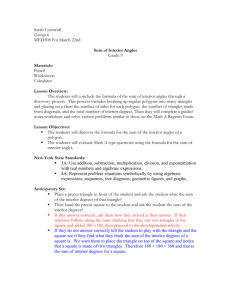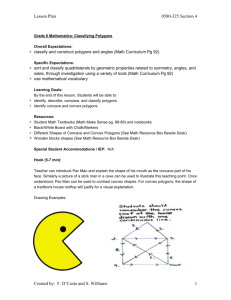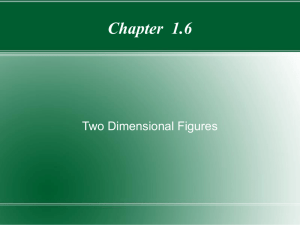Justification of the Formula for the Sum of the Interior Angles of a
advertisement
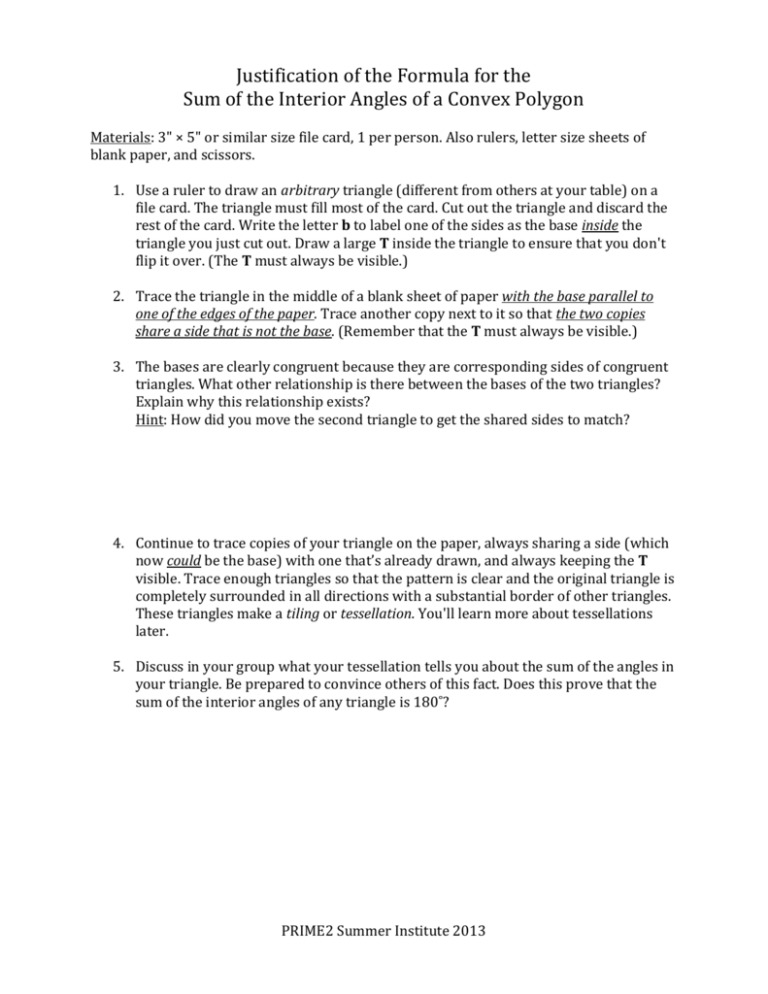
Justification of the Formula for the Sum of the Interior Angles of a Convex Polygon Materials: 3" × 5" or similar size file card, 1 per person. Also rulers, letter size sheets of blank paper, and scissors. 1. Use a ruler to draw an arbitrary triangle (different from others at your table) on a file card. The triangle must fill most of the card. Cut out the triangle and discard the rest of the card. Write the letter b to label one of the sides as the base inside the triangle you just cut out. Draw a large T inside the triangle to ensure that you don't flip it over. (The T must always be visible.) 2. Trace the triangle in the middle of a blank sheet of paper with the base parallel to one of the edges of the paper. Trace another copy next to it so that the two copies share a side that is not the base. (Remember that the T must always be visible.) 3. The bases are clearly congruent because they are corresponding sides of congruent triangles. What other relationship is there between the bases of the two triangles? Explain why this relationship exists? Hint: How did you move the second triangle to get the shared sides to match? 4. Continue to trace copies of your triangle on the paper, always sharing a side (which now could be the base) with one that’s already drawn, and always keeping the T visible. Trace enough triangles so that the pattern is clear and the original triangle is completely surrounded in all directions with a substantial border of other triangles. These triangles make a tiling or tessellation. You'll learn more about tessellations later. 5. Discuss in your group what your tessellation tells you about the sum of the angles in your triangle. Be prepared to convince others of this fact. Does this prove that the sum of the interior angles of any triangle is 180˚? PRIME2 Summer Institute 2013 6. Now we go on to polygons. The polygon shown below is concave. What makes it concave? What confusion can arise when considering angles of a concave polygon? Because of this confusion, we’ll stick with convex (non-concave) polygons for now. 7. On a fresh sheet of blank paper, draw one large convex polygon with the number of sides assigned by a presenter. (Wait until you are assigned a number of sides before drawing.) Those at your table with the same number of sides should work together. The formula you found using pattern blocks for the sum of the interior angles of a convex polygon has the number 180 in it. Using this fact as a hint, draw some dashed segments in your diagram that you can use to figure out the sum of the interior angles. Try to use a different method from your partner(s). Make a smaller copy of your diagram below. 8. Compare the different methods used at your table. Does the result agree with the formula you found earlier? Are these methods different proofs of the formula? 9. Write the formula for the sum of the interior angles of a convex polygon with n sides below. PRIME2 Summer Institute 2013 Extensions 1. Find a formula for the measure of each interior angle of a regular polygon with n sides. 2. Can you interpret this formula so that it applies to concave polygons as well as convex ones? Try it! 3. Which regular polygons can be made with pattern blocks? (OK to use lots of them.) 4. How do you know that you have made all possible regular polygons with the pattern blocks? PRIME2 Summer Institute 2013

